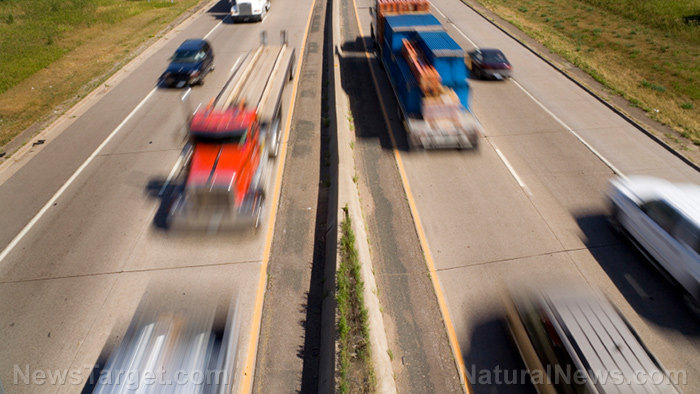Talking cars: New app will allow your car to tell you what it needs (like the car’s software does)
11/20/2017 / By Michelle Simmons

A new app will enable your car to tell you what it needs, as reported by the Science Daily.
Researchers from the Massachusetts Institute of Technology (MIT) are developing a mobile app that will make use of your smartphone’s microphone so that the car can you tell what it needs, such as air filter replacement, engine spark plug replacement, or tire balancing. (Related: Basic Maintenance Tips of Your Car That You Can Easily Try At Home.)
The mobile app will provide diagnostic information that can alert the driver of impending car problems or necessary routine maintenance, before the car breaks down or blows out because of these conditions. The app could help an average driver save $125 a year and truck drivers could save $600 a year.
Siegel explained that the high sensitivity of smartphones today enables a good detection of the relevant signals “without needing any special connection.” Moreover, mounting the phone to a dashboard holder would increase the level of accuracy for some diagnostics. He said that the accuracy of diagnostic results up to this point is over 90 percent, while misfire detection is 100 percent accurate and false positives will not happen.
For air filters, the team found that the sound of an engine can reveal signs of how clogged the air filter is and when it needs to be changed. Siegel said that changing the air filters too early or too late can be bad for the car, because air filters function better as they age. Right timing of replacing them can make a significant change in the performance of an engine and cost of operating. The app can tell when the filter is clogged and needs to be changed when the car begins to “snore.”
“As it starts to get clogged, it makes a whistling noise as air is drawn in. Listening to it, you can’t differentiate it from the other engine noise, but your phone can,” Siegel explained.
Siegel and his team conducted tests to different cars. They rented perfectly good cars and some that had issues such as clogged filters and misfires. From the rented cars, they also created issues they wanted to diagnose and then returned them back to normal. Siegel recalled that they even returned the cars better than when they rented it out. He added that he had given them new air filters, balanced their tires, and done an oil change.
For more complicated diagnostics like determining if tires are going bald or are over-inflated, the app will use the built-in GPS of the phone to observe the actual speed of the car. Then, vibration data will be added to measure how fast the wheels are turning, which can be used to compute the wheel’s diameter. The calculated wheel diameter can be compared to the diameter of a new and properly inflated tire.
The MIT team said that a prototype of the app is being developed and is predicted to be tested in the next six months. About a year after the app has been tested, a commercial version of it will be launched, and will be offered by Siegel’s start up company called Data Driven.
The developments of the app were published in a series of papers in the journal Engineering Applications of Artificial Intelligence.
In contrast, technology seems to be not as helpful as expected, according to a study. Researcher from the American Automobile Association (AAA) revealed that technology, which include maintenance reminders and other safety alerts, did not lessen the number of car breakdowns, instead car breakdowns increased, according to a report by Fortune.com.
“Vehicles today are more advanced than ever, yet are still vulnerable to breakdowns,” said Cliff Ruud, AAA’s managing director of automotive solutions.
In 2015, the AAA rescued 32 million drivers who had problems with battery, flat tire, and key. The study suggested that sometimes the tech could potentially be part of the problem.
Read more about technological advances at FutureScienceNews.com.
Sources include:
Tagged Under: AI, app, car, driving, dubious benefits, future science, future tech, no need to think, science and technology, smartphone surveillance, technological advances, technology dependence




















